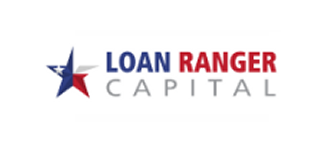Loan Servicing Software vs Manual Servicing: 7 Reasons Manual Methods Are No Longer Viable
In the contemporary lending environment, where compliance requirements are increasingly stringent and portfolios more complex, the distinction between manual and software-based loan servicing has become more than a matter of convenience.
Many lenders begin with manual systems, often relying on spreadsheets, file folders, and basic accounting tools. These methods can appear sufficient in the early stages of a lending operation, particularly when managing a small number of loans or relatively simple structures. However, as portfolios grow in size and complexity, the limitations of manual servicing become more pronounced and increasingly difficult to ignore.
This article outlines seven key areas where manual servicing introduces significant risk and inefficiency, and illustrates why transitioning to a robustloan servicing software platform is not merely beneficial but increasingly necessary.

1. Manual Servicing Cannot Sustain Portfolio Complexity
Modern lending rarely involves a single type of loan. Many portfolios today include fixed-rate and adjustable-rate loans, interest-only periods, balloon payments, construction lines of credit, and custom investor structures. Managing such diversity requires precise and consistent calculations, along with rigorous documentation and tracking.
Manual systems are inherently ill-suited for this level of variation. Even with experienced staff, the risk of calculation errors, missed payment schedules, or inconsistent data entry increases substantially. By contrast, loan servicing software is designed to support complex amortization schedules, dynamically adjust interest terms, and handle multi-disbursement structures with accuracy and consistency.
2. Regulatory Compliance Has Outgrown Paper-Based Systems
The regulatory environment surrounding lending is not only vast but also subject to frequent change. Requirements from entities such as the CFPB, state-level regulators, and investor mandates require meticulous record-keeping, timely disclosures, and verifiable audit trails.
Manual processes make this difficult. Document management becomes fragmented, version control is unreliable, and compliance reports require significant staff time to compile and verify. Most importantly, these reports often lack the audit-ready consistency required during reviews or investigations.
Loan servicing software addresses these challenges directly. It maintains a full audit trail, automatically updates compliance workflows as regulations evolve, and enables fast, accurate reporting that can be accessed on demand.
3. Manual Operations Consume Disproportionate Time and Labor
One of the most persistent challenges in lending operations is administrative overhead. In a manual environment, staff must spend hours processing payments, updating balances, issuing late notices, and generating borrower or investor statements. As the number of active loans increases, so does the administrative burden.
This model does not scale. Staff expansion becomes necessary simply to maintain operational status quo, which in turn increases cost and complexity.
Loan servicing software significantly reduces this burden. Through automation of recurring tasks—such as payment processing, escrow management, and notification delivery—it enables teams to shift their focus from routine administration to strategic growth and portfolio oversight.
4. Investor and Borrower Expectations Have Evolved
In both private and institutional lending, expectations for transparency and self-service have increased. Investors expect access to real-time performance data and capital distributions. Borrowers, likewise, expect digital access to account information, transaction history, and payment portals.
Manual systems are fundamentally unable to deliver this experience. Reports must be prepared individually, documents distributed manually, and communication remains largely reactive.
By contrast, modern loan servicing software includes web portals, real-time dashboards, and on-demand reporting tools. These platforms allow investors and borrowers to independently access the information they need, reducing the administrative load on servicing staff while improving overall satisfaction.
5. Payment Management Requires Precision and Timeliness
Tracking borrower payments, especially across multiple payment methods and due dates, is one of the most error-prone aspects of loan servicing when handled manually. Late fees, prepayment penalties, partial payments, and returned transactions all introduce potential discrepancies that can be difficult to reconcile without a central system of record.
Software platforms handle these processes with greater precision. Payments are tracked in real time, late fees are assessed automatically according to predefined rules, and borrower accounts are updated instantly. This not only reduces errors but also ensures that servicing remains consistent, even across large volumes of transactions.
Also read: How to Optimize Loan Management with Loan Servicing Software
6. Portfolio Insights Cannot Emerge from Disconnected Data
Effective portfolio management requires accurate, timely insight. Lenders must understand loan performance, delinquency trends, investor returns, and overall portfolio risk in order to make informed decisions. In a manual environment, such insights often require the compilation of data from multiple spreadsheets, often with inconsistent formatting or definitions.
This process is slow and unreliable. It may also result in missed opportunities, delayed responses to risk indicators, and strategic misalignment.
One of the key benefits of loan servicing software is its ability to consolidate all portfolio data into unified dashboards and analytical reports. It enables lenders to identify performance trends, monitor risk exposure, and support investor reporting with data that is current, contextual, and complete.
7. Manual Servicing Limits Strategic Scalability
Perhaps the most fundamental limitation of manual servicing is its inability to scale. As loan volume increases, manual workflows become exponentially more fragile. New team members must be trained on highly individualized processes. Communication across departments becomes slower. Errors increase, while responsiveness declines.
Software-based servicing is inherently more scalable. With standardized processes, configurable workflows, and role-based access, new team members can be onboarded more efficiently, and the system can accommodate growth without requiring proportional increases in headcount or infrastructure.
Loan Servicing Software Is a Strategic Imperative
Manual loan servicing may seem manageable in the early stages of a lending business, but it is not a viable long-term strategy. As portfolios grow and expectations rise, the risks associated with manual systems compound. Regulatory exposure, administrative inefficiency, and data inconsistency place undue pressure on teams and can ultimately constrain business growth.
Choosing loan servicing software is no longer an optional enhancement. It has become the strategic foundation for scalable, compliant, and investor-ready operations.
For lenders seeking a clear and proven path forward, this decision goes beyond choosing any software platform. It requires selecting a solution that is purpose-built for the realities of modern loan servicing.
This is precisely where LOAN SERVICING SOFT stands apart.
With over 35 years of experience serving lenders across diverse markets, LOAN SERVICING SOFT delivers a comprehensive platform designed to address the operational, regulatory, and structural complexities that today’s lending institutions face.
Our loan servicing solution offers configurable workflows, secure borrower and investor portals, automated compliance tracking, and real-time reporting—all developed to support lenders as they grow, diversify, and professionalize their operations.
Ready to simplify your processes and scale with confidence? Let us show you how.





























